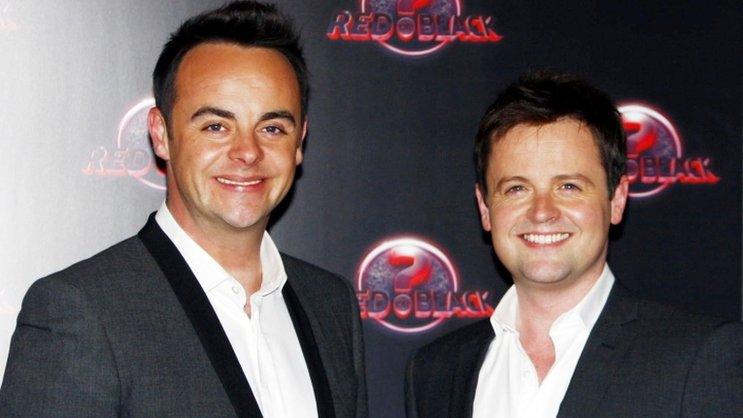Byker Grove: When Ant and Dec were PJ and Duncan
- Published

Ant and Dec in the days when they were PJ and Duncan and did not have to stand with Ant on the left and Dec on the right for images
Twenty five years before "gritty" and "groundbreaking" became standard TV adjectives, the BBC's teen soap Byker Grove was just that. Filmed on Tyneside, based around a local youth club, its cast was recruited from ordinary schools, unearthing future stars who say they would not be where they are today without it.
Although it is almost unthinkable, it was a time when Ant did not automatically come with television co-presenter Dec.
Declan Donnelly played Duncan in the first series of Byker Grove but Anthony McPartlin's PJ did not appear until series two.
"I don't really remember you being there," Ant has said. "You weren't really on my radar."
Dec has admitted they did not "hit it off". Their characters became friends before they did.
Starting on 8 November 1989, the show's first run was only six episodes long. But the BBC's decision to bring in EastEnders director Matthew Robinson was testament to its commitment.
Storylines about teenage pregnancy, drug addiction and child abuse hauled in the audience and earned it a Bafta nomination. With success came complaints from parents and, in the case of the famous gay kiss, nationwide tabloid outrage and calls for Robinson's head.
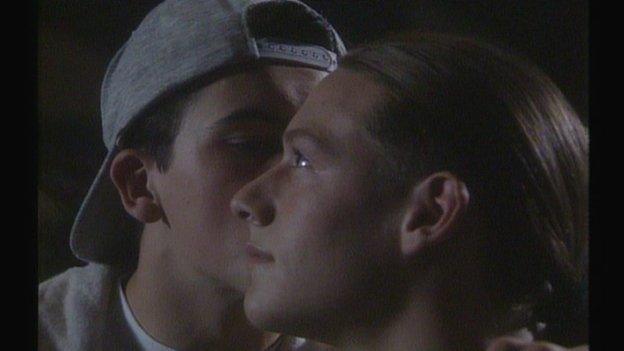
Noddy makes a tentative move on Gary who storms out of the cinema
Although Noddy Fishwick's shy peck at Gary Hendrix's cheek in a dark '90s cinema was angrily unrequited, it was the first gay kiss on UK children's television.
Former head of BBC children's television, Anne Home, has said it "did cause a certain amount of furore".
"We had a number of complaints but often adults don't watch long enough to see that actually there is a very strong moral at the end of it."
Location manager and assistant director Si King - now one half of the Hairy Bikers - believes the show was "loud and proud" of its regional identity and its focus on serious issues "everybody in the country could relate to".
It lasted for 17 years and more than 340 episodes.
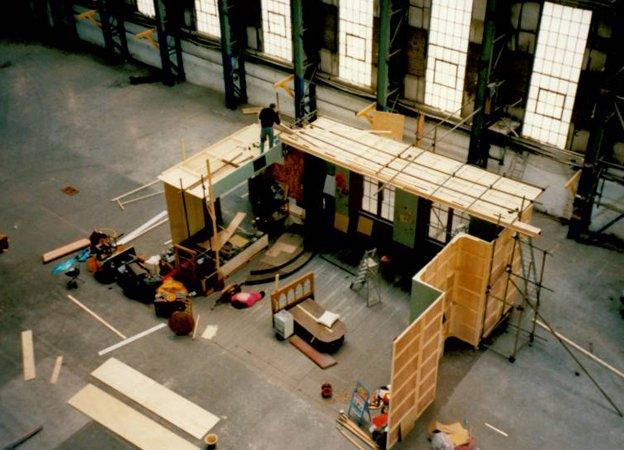
The replica of the main youth club common room was set on fire inside an old warehouse
A clutch of presenters, actors, actresses and singers - including Donna Air, Jill Halfpenny, Charlie Hardwick, Chelsea Halfpenny, Andrew Hayden-Smith and Ant and Dec - owe something to the platform it gave them.
"If it wasn't for Byker Grove we wouldn't be where we are today," Ant says.
"We kind of owe everything to Byker Grove," Dec adds. "It's where we learnt to do what we do."
The show taught them discipline, how to turn up on time and behave on set, Dec says. It taught them professionalism.
Set painter Ray Arkless was one of many who knew "without a doubt" they had a future. But would they have been successful anyway? The rest of the cast learned the same and not all went on to become household names.
As Spuggie, Lyndyann Barrass was, at one point, earning more than her parents but found it hard to be taken seriously as an adult actress.
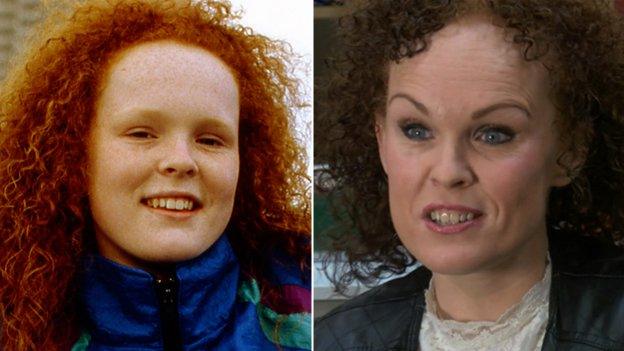
Lyndyann Barrass says she was just as "bolshy" as her character, Spuggie (which means sparrow)
"I do think I found it hard because Spuggie was type-cast," she says.
"But I haven't ever not worked. I've still done the odd thing, but just not as high profile as the boys have done."
She was the first on the soap to be cast - as a "short, stumpy, flat-chested, hormonal 12-year-old".
Easy to recognise, with a shock of ginger curls, she would attract shouts in the street of "Spuggie" or "tennis balls" (after a puberty-related flirtation with DIY breasts).
"I don't think any of us ever realised what an institution Byker Grove was and how big it was and the amount of millions of viewers we got," she says.
"We were on par with Eastenders and Coronation Street at the time, we had that many viewers."
She later worked in Fenwick's department store, where impromptu visits by Ant and Dec would leave her colleagues star-struck. Her children still shout "Mam! Your friends are on the telly!"

Constructing Byker Grove: Bob Boagey and Ray Arkless

Bob Boagey and Ray Arkless built a replica of Grey's Monument
"Bob used to make the sets, then I would go in and do what had to be done to them - paint them, wallpaper them, age them, dust them down with Fuller's earth and make them look really, really old," Ray says.
"We built a cottage in Kielder and it looked so realistic there were these Canadians on tour and they asked was it for sale. It looked so real but, if they'd walked behind it, there was just nothing there.
"We had to reproduce the general room [the main room in the youth club] down in this big warehouse.
"We actually had to set fire to it. It was when Billy Fane [youth leader Geoff] got caught in the fire and a beam came down and killed him. That was a real fire, that. We literally set fire to it."

Ian Fenton worked as a scriptwriter for the show between 2004 and 2006.
"I was in this room with all these kids and basically it was their show. They weren't unpleasant but they were quite cocky. They'd done it a million times," he says.
"If the script worked, if they laughed, if they got it, that was your first audience really. But equally, if you'd written stuff that didn't work, then you really knew."

With latex, plastic, wood, wire, polystyrene and paint a new, believable reality was created
The scripts reflected life to such an extent the two sometimes became blurred.
Longest serving cast member Anne Orwin found her role as foster mother Lou Gallagher had an effect on real foster children.
"Foster kids would come up to me and say, 'I was having a really hard time and wasn't very happy in my foster home but Lou kept me going and I always wanted to be in your house,'" she says.
"That just breaks your heart. That's much more than an acting job."
She also remembers filming at the busy Gallowgate bus station, when the producer barked at a family of extras to get off a bus so the shot could be done again - only to discover it was a real family, on a real bus.
Children loved the soap for the same reason their parents did not.
"It showed the North East in all its diversity, in all its character, in all of its beauty, in all of its grot, in all of its grime," Si King says. "Bang up to date with the issues and values that mattered to kids."
Those who worked on the show also say it gave the North East a voice. A voice that Anne Home, who commissioned it, remembers having a very "broad" accent.
"We did have problems with people not quite asking for subtitles but almost," she once said.
"But I think that was the grown ups. I think the kids understood perfectly well."
- Published22 May 2014
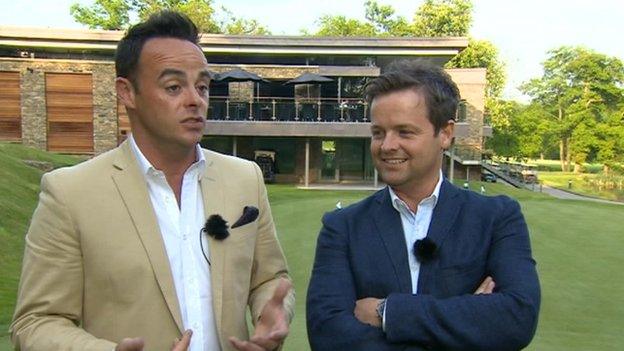
- Published23 January 2014
- Published31 March 2013
